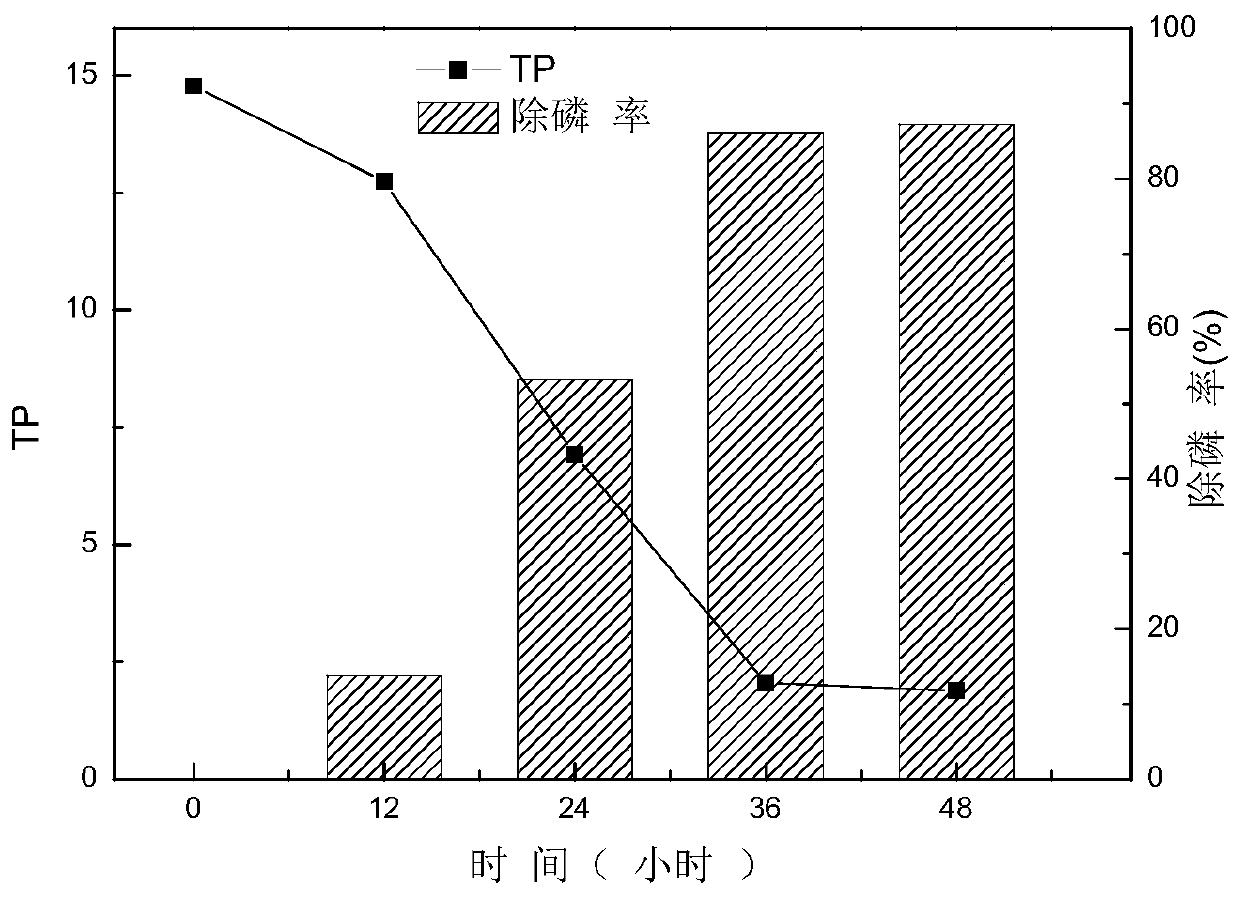Acinetobacter rhizosphaerae capable of efficiently removing phosphorus and application thereof
An Acinetobacter and Rhizobia technology, applied in the field of environmental microorganisms, can solve the problems of substandard sewage discharge and low phosphorus removal efficiency, and achieve the effects of improving phosphorus removal rate, improving effluent quality and great application prospects.
- Summary
- Abstract
- Description
- Claims
- Application Information
AI Technical Summary
Problems solved by technology
Method used
Image
Examples
Embodiment 1
[0038] Screening, isolation and identification of embodiment 1 bacterial strain
[0039] 1. Source of the strain
[0040] Sediment of a section of the Xiaogu River in the East Campus of Sun Yat-Sen University, Guangzhou
[0041] 2. Medium
[0042] (1) Enrichment medium: 5.0 g of anhydrous sodium acetate, MgSO 4 ·7H 2 O 0.5g, CaCl 2 0.2g, (NH 4 ) 2 SO 4 2.0g, KH 2 PO 4 2~20mg, 2mL of trace element solution, sterile water to 1000mL, pH7.0~7.2, increase the KH in the medium successively 2 PO 4Content: 2, 5, 10, 15, 20mg.
[0043] (2) LB medium: peptone 10.0g, yeast extract powder 5.0g, glucose 1.0g, sodium chloride 5.0g, agar 15.0g, sterile water to 1000mL, pH7.0±0.2.
[0044] (3) Activation medium: peptone 10.0g, yeast extract powder 5.0g, glucose 1.0g, sodium chloride 5.0g, sterile water to 1000mL, pH7.0±0.2.
[0045] (4) Detection medium: CH 3 COONa 1g, MgSO 4 82mg, FeSO 4 ·7H 2 O 6.76mg, CaCl 2 60mg, (NH 4 ) 2 SO 4 0.2g, beef extract 0.22g, K 2 HPO 4...
Embodiment 2
[0055] The application of embodiment 2 phosphorus accumulating bacteria
[0056] 1. Phosphorus removal efficiency of phosphorus accumulating bacteria
[0057] Pick a loop of the phosphorus-removing bacteria obtained in Example 1 and insert it into the activation medium, and after cultivating it on a shaker at 30°C and 150r / min for 12h, transfer the bacterial suspension to 200mL detection medium at a ratio of 10%. . The cultivation process includes two processes of anaerobic and aerobic, so first seal the conical flask containing the mixed solution with a rubber stopper, and then pass in filtered and sterilized high-purity nitrogen to provide an anaerobic environment; anaerobic static After culturing for 24 hours, transfer it to a shaker at 30°C and 150r / min for aerobic cultivation for 24 hours; after the cultivation, take the culture solution and centrifuge it at 10000r / min for 10min, and take the supernatant to measure the total phosphorus concentration according to the moly...
Embodiment 3
[0062] Example 3 Effect of pH on Phosphorus Removal Efficiency of Bacteria
[0063] Adjust the detection medium pH value to be respectively 4.0, 5.0, 6.0, 7.0, 8.0, 9.0, 10.0, the bacterial strain obtained by screening in Example 1 is inoculated into 250mL of the medium with 200mL different pH values by 10% inoculum In the Erlenmeyer flask, pass nitrogen into the flask to maintain the anaerobic condition. After 24 hours of static cultivation, cultivate it aerobically at 30°C and 150r / min for 24 hours, measure the concentration of total phosphorus in the final supernatant, and obtain the phosphorus removal rate . The result is as Figure 4 As shown, the growth conditions of rhizobia in different pH culture solutions are also different. As the pH value increases, the biomass first increases and then decreases. The OD600 value is the highest at pH=6 and pH=7, and the biomass is the largest. When the biomass of the culture medium is the largest, the removal of phosphorus reach...
PUM
 Login to View More
Login to View More Abstract
Description
Claims
Application Information
 Login to View More
Login to View More - R&D
- Intellectual Property
- Life Sciences
- Materials
- Tech Scout
- Unparalleled Data Quality
- Higher Quality Content
- 60% Fewer Hallucinations
Browse by: Latest US Patents, China's latest patents, Technical Efficacy Thesaurus, Application Domain, Technology Topic, Popular Technical Reports.
© 2025 PatSnap. All rights reserved.Legal|Privacy policy|Modern Slavery Act Transparency Statement|Sitemap|About US| Contact US: help@patsnap.com



